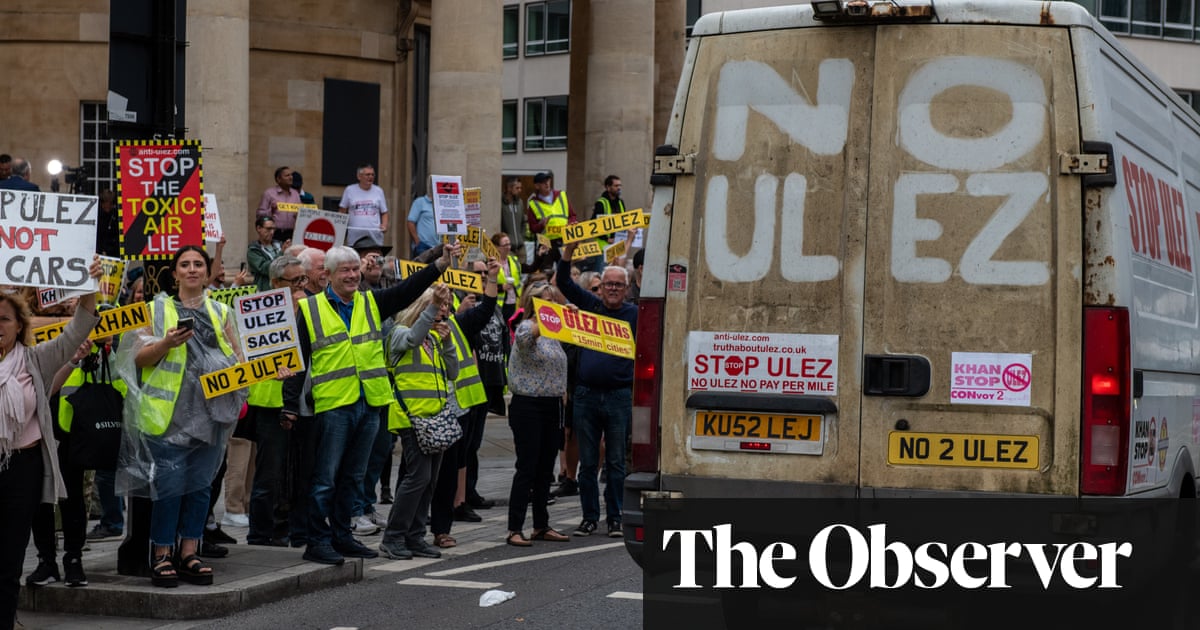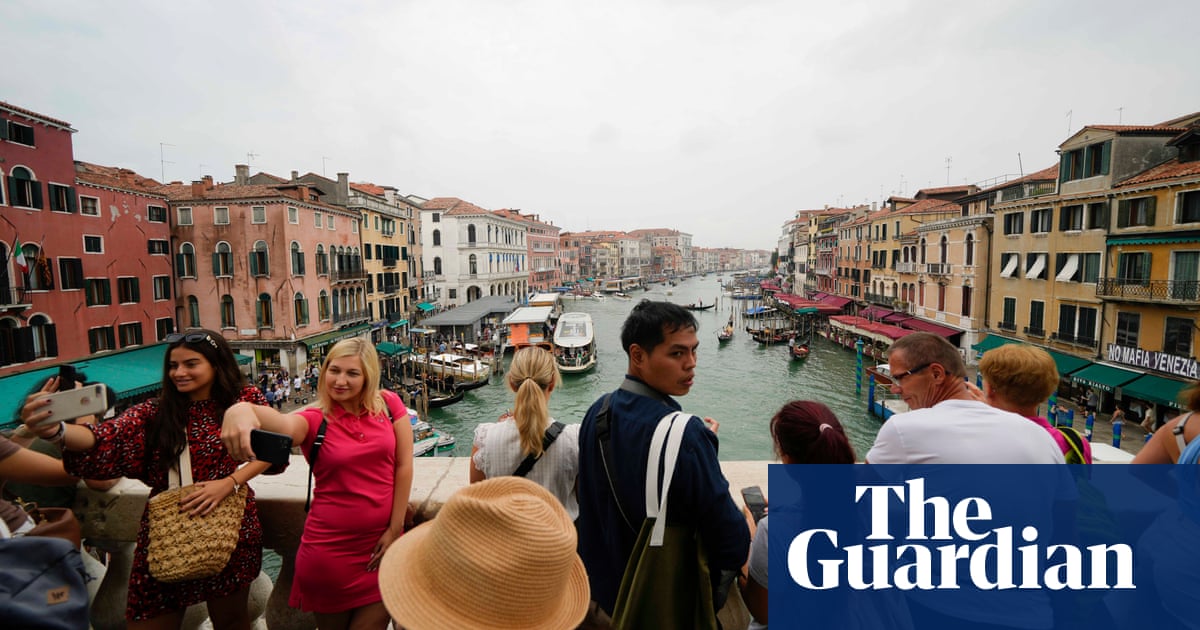
ooming above the affluent Zamalek neighbourhood in the centre of Cairo, the Forte Tower has stood as the tallest building in Egypt for the last 30 years – yet it remains unfinished and abandoned. A ring of faintly Islamic pointed-arch windows encircles the uppermost floor of the great cylindrical shaft, creating a forlorn crown on the skyline, like a host awaiting party guests that never arrived.
Begun in the 1970s, the 166-metre tall building was planned to house a glamorous 450-room hotel, with restaurants, shops and a nightclub. It was to be the first part of a “new Manhattan of Egypt”, a cluster of skyscrapers imagined by president Anwar Sadat to rise from Gezira Island in the middle of the Nile, signalling Cairo’s place on the world stage. Following Sadat’s assassination in 1981, the project hit the rocks. Under subsequent president, Hosni Mubarak, the developer faced battles for permits and licences, seeing the project mired in lawsuits that ultimately halted it. The towering carcass has been left empty ever since, a single showroom furnished with bedding, lamps and an old TV providing an eerie relic of the dream.
“This building sums up the Egyptian way,” says Mohamed Elshahed, author of a new architectural guidebook, Cairo Since 1900. “A developer gets direct permission from the president, then another president comes in with his own circle of businessmen who want a piece of the cake. The original investor says no. The project is abandoned. What kind of city is this, that allows the built environment to be shaped in such a way?”
The result of several years of digging through haphazard archives, Elshahed’s guidebook is an intriguing example of the form. It includes 226 buildings, some unfinished, some demolished, some never even built. Many appear to be unremarkable, everyday buildings, not the kind historians would necessarily regard as worthy of veneration. And that’s precisely the point. “The book is not only intended as a sample of Cairo as it is now, but a record of what once was, or could have been,” says Elshahed, a curator and architectural historian who founded the Cairobserver blog. “So much of the city has been demolished before we’ve even discovered and documented it. It means that, despite the generations of development, Cairo is not a place where you can walk around and really feel history, or identify who did what when. It’s so muddled.”
Elshahed was motivated to compile the book after witnessing a new generation of Egyptian architects take what he saw as no apparent interest in the recent history of their own city. “Twentieth century architecture here is a huge blind spot,” he says. “Students are learning things that are irrelevant and producing designs that might as well be in New Jersey.” Coupled with this, he says, is the alarming increase in the pace of demolition. Egypt’s heritage laws require a building to be at least 100 years old before it can be considered for protected status, which has translated into a kind of deadline for owners to intentionally damage or demolish their buildings before they reach their centenary year.
As he writes in the book’s introduction, this has spawned “a lucrative clandestine business specialised in inconspicuously damaging otherwise structurally sound heritage-worthy buildings in order to avoid listing and create the case for issuing a demolition permit”. Techniques used range from flooding foundations to injecting acid into the structure, to speed up decay and encourage collapse. And besides, in the context of Egyptian civilisation, a century is a mere blip. “We are constantly told we are a 7,000-year-old country,” says Elshahed. “If you inculcate this idea into the populace, then a building from 50 years ago is nothing. The history of modernism has been mostly swept under the rug, seen as a small drop in the bucket.”
His book is a call to arms, a rallying cry to take another look at the everyday fabric of this richly layered city. The selection of buildings shows a dizzying range of styles that have been used liberally across the century, promoted by successive political leaders and their desires to overwrite what came before. There are the ornate Neo-Mamluk confections of the early 1900s (often designed by European architects working in Cairo, trying to be “contextual”); the bold experiments with international modernism and brutalism in the 1950s and 60s under President Nasser; the renewed search for identity in the 1970s, with the vernacular revival, followed by inflated postmodern structures clothed in ancient Egyptian fancy dress. Finally there are a handful of sci-fi fantasies that never quite made it off the drawing board. It is as jumbled and frenetic an eyeful as the experience of walking Cairo’s energetic streets.
Emerging from the melee is Sayed Karim, author of around 30 buildings in the book. Having studied in Switzerland, Karim returned to found the magazine Al Emara in 1939, the world’s first Arabic-language architectural journal, and championed a kind of modern architecture that was rooted in the Egyptian context. Both his Ouzounian Building (1949) and Zamalek Tower (1953) are concrete blocks with brise soleil (shading fins) as a prominent feature on the facade, while his plan for the Merryland park saw a series of expressive concrete canopies scattered around a playful landscape. But Elshahed insists that style was the least of Karim’s concerns.
“Egyptian modernists were not obsessed with the idea of style like their western counterparts,” he says. “They were interested in using the materials and construction technologies available in Egypt, rather than applying a stylistic pattern book. In Al Emara journal, the word ‘modern’ does not explicitly refer to a style but is used to refer to the latest developments and building materials.” The lack of a pure stylistic dogma is, he thinks, exactly why this kind of architecture has been ignored.
There are a number of curious outlier buildings in the book, too, which appear to defy stylist conventions altogether. Gamal Bakry’s Villa Badran, built in 1971, stands as a chubby rebellion against the proliferation of diluted modernism across the capital. Part Flintstones, part Barbapapa, the residence has a primal, monolithic look, formed of bulbous boulder-like forms connected by planted terraces. A reinforced concrete church, designed by Seddiq Shehab el-Din in 1955, is equally original, looking like the ribbed hull of an upturned boat.
Then there’s the enigmatic Al-Rahma mosque in Nasr City, built by Hassan Rashdan in 1982, a spaceship crossed with a mountain, comprising an octagonal pyramid topped with a dome. Meanwhile, the ancient Egyptian revival reaches a peak of high camp in the form of the Supreme Constitutional Court, designed by Ahmed Mito in 1999 (much altered from his original design, he claims), featuring gigantic cartoonish temple columns bursting from momentous tapering portals. It’s a rich buffet to flick through, but there is a noticeable gap when it comes to examples of notable contemporary architecture.
“Today there is an unprecedented amount of construction in Egypt,” says Elshahed. “We’re building a new capital and new satellite cities, but, ironically, there’s almost no presence of architects in public life. There is a very visible divide between who has access to the services of an architect and who doesn’t – and the segment of society that does now hides itself behind big walls. As the elite have regressed inside their gated communities, architecture has all but disappeared.”












